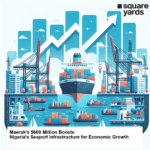Port congestion, container shortages, and soaring freight rates have created a perfect storm of disruptions, leaving businesses scrambling to adapt. The lingering impact of the COVID-19 pandemic continues to reverberate throughout global supply chains and has presented new difficulties for the shipping industry.
Port Congestion Reaches Critical Levels in Key Maritime Hubs
Port congestion has reached critical levels in major maritime hubs worldwide. Vessels are experiencing prolonged waiting times, leading to costly delays and logistical nightmares. The surge in consumer demand, coupled with labour shortages and operational inefficiencies, has overwhelmed port authorities and terminal operators, exacerbating congestion woes.
Container Shortages Further Exacerbate Supply Chain Disruptions
Container shortages are plaguing the shipping industry, creating a mismatch between container availability and demand. The pandemic-induced disruptions have intensified this issue, with shipping lines struggling to efficiently reposition containers. As a result, equipment shortages and inflated shipping costs have become pervasive, causing further delays in receiving essential goods and raw materials. This, in turn, has impacted production schedules and bottom lines for businesses.
Soaring Freight Rates Compound the Challenges
Freight rates have skyrocketed to record highs as carriers capitalize on the supply-demand imbalance. Spot rates on major trade routes have surged, with some routes even showing quadruple-digit percentage increases year-on-year. The exorbitant costs of shipping goods have forced businesses to reconsider their sourcing and distribution strategies, as they seek alternative solutions to mitigate the financial strain caused by these soaring rates.
The Ongoing Impact of the COVID-19 Pandemic Looms Large
The COVID-19 pandemic continues to cast a long shadow over the global shipping industry, amplifying existing challenges and introducing new uncertainties. Supply chain disruptions, labour shortages, and geopolitical tensions further complicate the situation, leaving businesses vulnerable to ongoing disruptions. In this environment of volatility and unpredictability, industry stakeholders must adopt proactive measures to successfully navigate the March Madness gripping global shipping. Despite the challenges, opportunities for innovation and collaboration abound.
Embracing Digitalization, Automation, and Sustainable Practices
Stakeholders are exploring new avenues to build a more resilient and agile maritime ecosystem. Digitalization and automation have gained importance, allowing for increased efficiency and smoother operations. Furthermore, sustainable practices and supply chain resilience have become focal points, enabling businesses to reduce their environmental footprint while improving overall resilience to disruptions and market fluctuations.
The Way Forward
By embracing change and leveraging technology, the shipping industry has the potential to emerge stronger from the challenges it is facing. The March Madness gripping global shipping serves as a catalyst for innovation and collaboration, urging stakeholders to find creative solutions to navigate the stormy seas. With proactive measures and a commitment to adaptability, the industry can overcome the current disruptions and foster a more stable and robust maritime landscape.











































